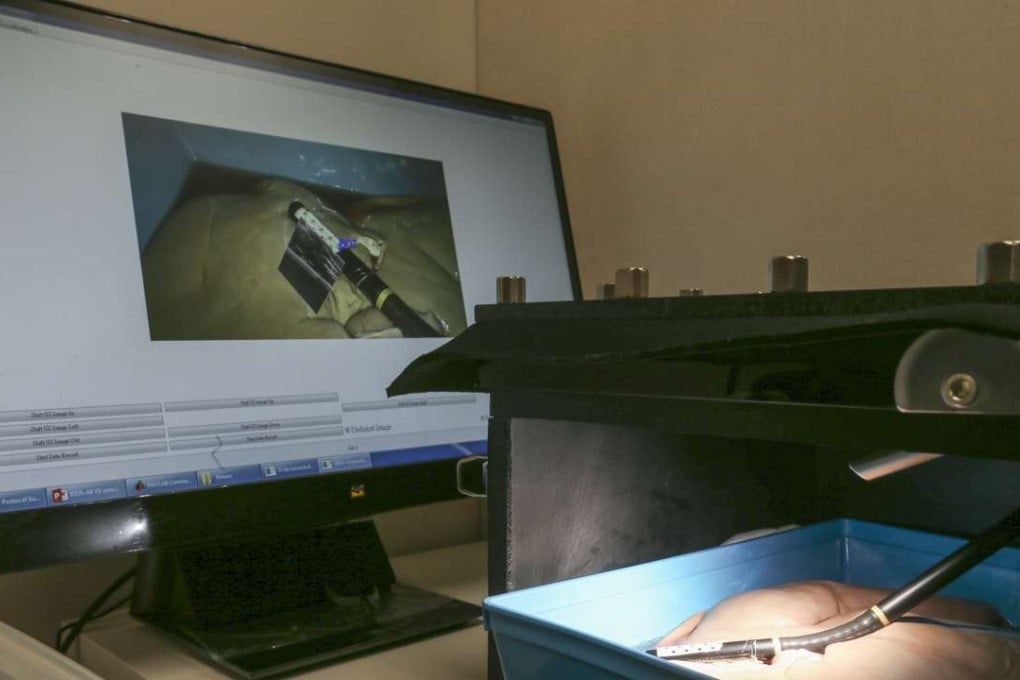Forget Pokemons – in world first, Hongkonger applies augmented reality to surgery
Medical graduate Catherine Chan, armed with a master’s degree in medical imaging, is fine-tuning AR application that solves the biggest problem in keyhole surgery – having to look at images on two screens simultaneously

A Chinese University of Hong Kong graduate has pioneered the use of augmented reality for medical imaging during minimally invasive surgery, removing the need to look at multiple images which can be a distraction during surgery.
Catherine Chan Po-ling, an orthopaedic surgeon at Prince of Wales Hospital in Sha Tin, says the pioneering technology has solved one of the limitations of minimally invasive, or keyhole, surgery that has dogged surgeons.
Demonstrating with a pig liver, she explains: “To check whether the liver has cancerous cells, a doctor has to use an ultrasound probe to see beneath the surface of the liver. There are two cameras showing images. One, from an ordinary camera, shows the surface of the liver. The other is the camera from the ultrasound probe which shows the same black-and-white images expectant mothers see of their fetuses. The doctor has to look at two images on two screens a while manoeuvring two probes at the same time. This requires a lot of hand-eye coordination. This has long been the biggest problem regarding minimally invasive surgery.”

“While monsters pop up on phone screens of Pokemom Go players, combined real-time images of the probed body parts pop up on the screen.”
